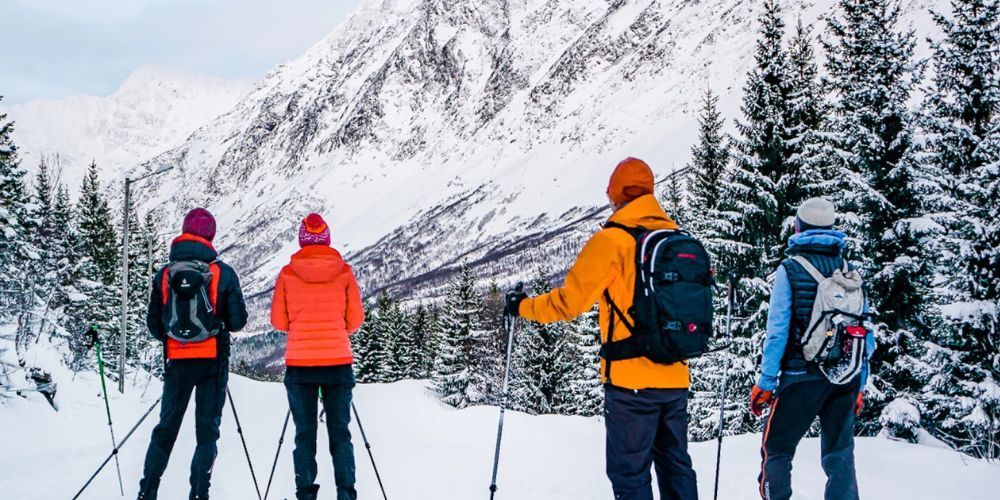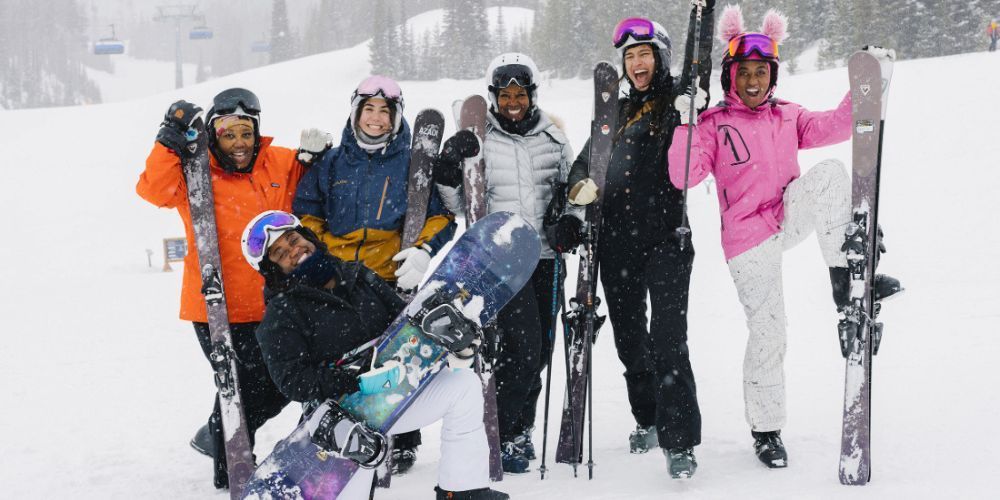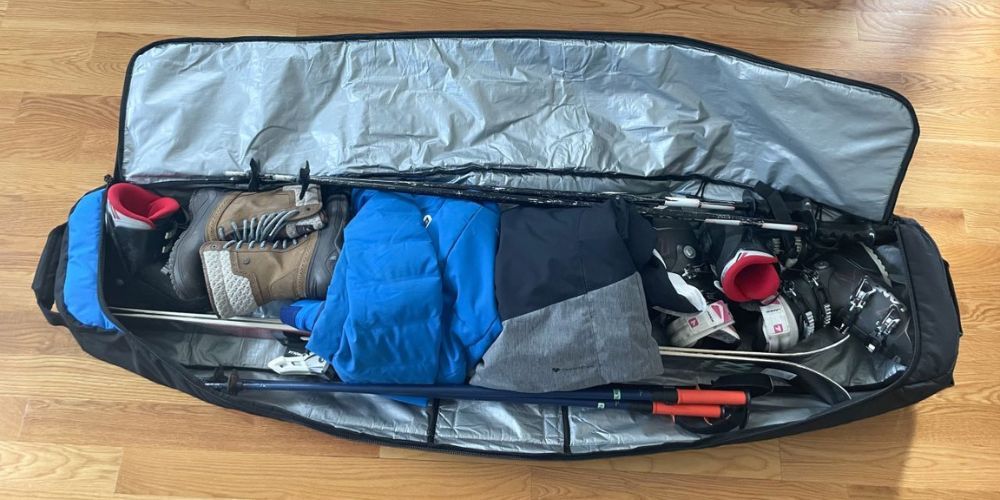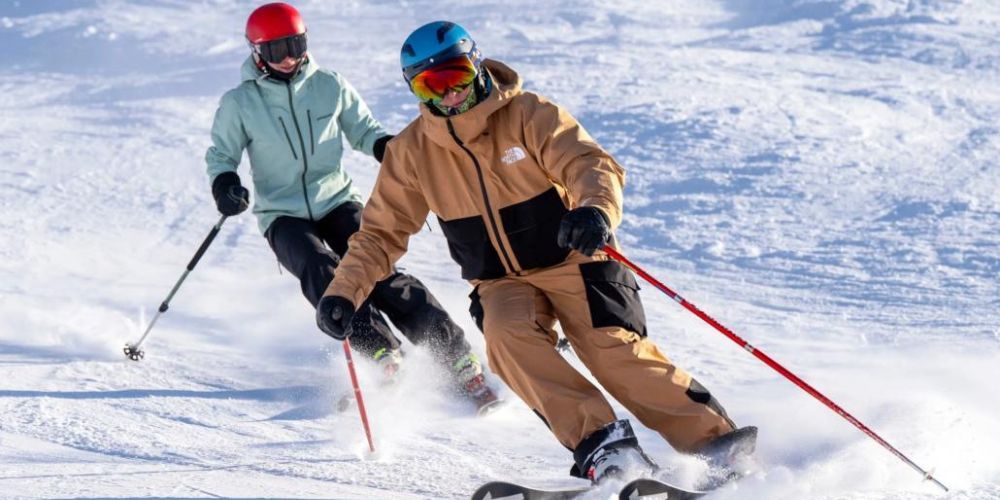William Flaiz is a lifelong athlete and outdoor enthusiast with a deep passion for adventure and sports. With over two decades of experience competing in marathons, triathlons, adventure races, and a wide range of recreational activities, William brings a wealth of knowledge to Sports and Nature Gear. Having explored 49 U.S. states and over 25 national parks, his extensive travels and hands-on experience with gear and gadgets provide readers with practical, expert advice for their own outdoor adventures. Whether it’s running, biking, kayaking, or hiking, William’s insights are invaluable to anyone looking to enhance their experience in the great outdoors. Read his full bio.
Ski Goggles: Top 10 Styles and Reviews for 2024
Ski goggles aren’t just another accessory; they are as vital as your skis or snowboard for a safe and enjoyable trip down the slopes. The right pair can mean the difference between a fantastic run and one plagued by foggy lenses or uncomfortable fits.
We understand the frustration of switching out yet another pair of disappointing goggles. We’ve dug deeply into testing an array of models in varying conditions—from powder days when visibility drops significantly to bright bluebird skies that cause harsh glares. Through this painstaking process, we've identified the top ten ski goggles for 2024 that expertly balance style, functionality, and price—all designed to enhance your skiing experience in any weather condition.
When buying ski goggles, you should consider factors such as comfort and fit, lens technology, field of view, and ventilation systems. Additionally, look for features like anti-fog technology and adjustable straps to ensure an optimal skiing experience.
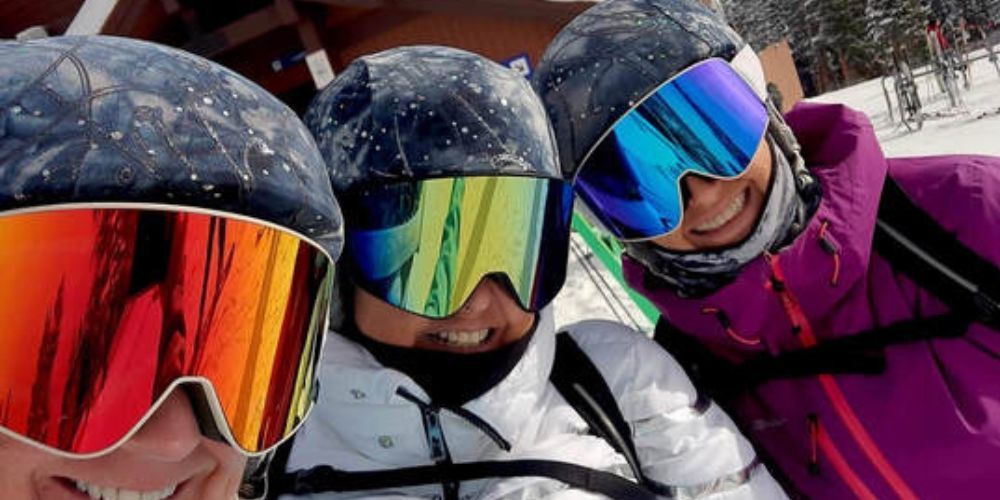
Top Ski Goggles for Various Conditions
On powder days, visibility can be the difference between a thrilling ride and a harrowing experience. The Oakley Flight Deck L is a powerhouse option for these snowy adventures. With its oversized spherical lens design, skiers benefit from an expansive field of view that allows you to spot impending obstacles in heavy snowfall. This enhanced perspective can lead to a more enjoyable and safer day on the slopes. As one avid skier noted, “With the Flight Deck, I felt like I could see everything during a whiteout.”
Moving from powder days to sunshine brings its own unique characteristics requiring specific technology.
For sunny bluebird days, where the snow glimmers under the bright sun, investing in a pair of Smith I/O Mag ChromaPop goggles makes perfect sense. These goggles feature advanced lens technology designed to augment color contrast significantly. You'll notice a marked improvement in distinguishing subtle variations across different types of snow and terrain, reducing eye strain throughout the day. Enhanced brightness and vivid colors improve visibility and maximize enjoyment while carving down pristine slopes.
Conversely, what happens when the clouds roll in and visibility begins to dwindle?
In overcast or low-light conditions—when shadows can obscure your view—the Anon M4 Toric MFI shines as a top pick. Its standout interchangeable lens system allows for quick adjustments to lenses optimized for flat light conditions. By replacing your current lens with something lighter, like a yellow or rose-tinted lens, you can transform your visibility and adapt to changing weather without missing a beat. A user shared their experience saying, “Switching lenses in the middle of a storm has never been easier with Anon’s magnetic system.” This quick change feature enables skiers to stay agile, ensuring safety and clear vision no matter what conditions they encounter.
The thoughtful selection of goggles tailored to varying skiing environments can significantly enhance performance and enjoyment on the slopes. Now, let's explore how different types of lenses can further impact your skiing experience.
Choosing the Best Lenses
Selecting the right lens can make a world of difference in your skiing experience. A well-chosen lens not only enhances your vision quality but also significantly contributes to safety on the slopes. Given the varied conditions one encounters while skiing or snowboarding, it's essential to understand the differences between lens technologies and colors to make an informed decision.
Photocromic vs Polarized
Photochromic lenses adjust automatically to changing light conditions, lightening or darkening based on sunlight exposure. This feature provides convenience without the hassle of swapping lenses mid-run. Conversely, polarized lenses reduce glare from sunlight reflecting off the snow or ice. While both features enhance vision, they don't always appear together in every goggle model.
This leads to an interesting dialogue among skiers: some swear by photochromic lenses for their flexibility across varying terrains and weather changes, while others believe that polarized lenses are superior on brilliantly sunny days, particularly at higher altitudes where UV exposure is intensified. By assessing your typical skiing environment and personal preferences, you can choose what works best for your unique needs.
Lens Color Options
Lens color plays a crucial role in how effectively you perceive your surroundings while navigating different lighting conditions. For bright, sunny days when the sun beams down overhead, darker tints like black or gray reduce brightness overload, allowing for comfortable visibility. On the opposite end of the spectrum, lighter lenses—such as yellow or blue—are advantageous in poor light or overcast situations; they enhance contrast, helping you navigate low-visibility conditions confidently.
Recently, brands have started offering exciting choices like green and gold-tinted lenses. These fascinating options boast balanced performance across various settings while harnessing benefits from multiple tint characteristics without compromising clarity or protection.
While selecting the type of lens is critical, understanding their limitations will also play a significant role in optimizing your skiing experiences as we explore vital protective features next.
Anti-Fog and UV Protection
Nothing can ruin your skiing experience faster than having your goggles fog up mid-descent. Modern ski goggles are designed with advanced anti-fog treatments, making it imperative to choose a pair that not only claims this feature but guarantees long-lasting performance. It's essential to consider how the goggles manage moisture—after all, the warmth from your face turns into invisible moisture that could cloud your vision as you push down a snowy slope.
Many manufacturers like SPY+ have perfected their anti-fog technology by combining proprietary lens coatings with meticulously engineered ventilation systems. This approach allows for maximum airflow, keeping lenses clear even during those exhilarating runs. Finding goggles that keep fog at bay isn’t merely a luxury; it’s a necessity for safety and enjoyment on the mountain.
The Significance of UV Protection
Equally crucial is UV protection. When skiing or snowboarding, you may not feel the sun's intensity, especially in cold weather. However, studies demonstrate that UV radiation increases by approximately 5% for every thousand feet above sea level. This means the higher you go, the more susceptible your eyes become to damage from harmful rays.
Quality goggles should provide 100% UVA and UVB protection to shield your eyes from this intensified exposure. Failing to prioritize this aspect can lead to short-term eye discomfort and longer-term issues such as cataracts or other vision problems.
Investing in high-quality ski goggles with verified anti-fog capabilities and robust UV protection is essential for both comfort and safety. As you explore various options, ensure that these features are at the top of your checklist. Choosing wisely not only enhances your enjoyment but also protects your vision on the slopes.
With such pivotal features in mind, let's now focus on how to ensure each pair fits comfortably for a perfect skiing experience.
Ensuring Comfort and Fit
Comfort and fit are paramount when selecting ski goggles; they can significantly impact your skiing experience. After all, nothing ruins a day on the mountain faster than discomfort. Adjustable straps serve as a vital component in achieving a secure closure around your head. They can adapt to various helmet sizes or head shapes, providing that custom feel you need for extended use.
When choosing goggles, make sure you test the strap length to verify it's snug yet not overly tight. A well-fitted goggle will stay in place during those dynamic movements as you carve through fresh snow.
Additionally, the importance of padding cannot be overstated. Triple-layer foam padding not only cushions your face but also creates a seal that helps keep out cold air and moisture, which is crucial for maintaining clarity and comfort while skiing. This padding conforms to the contours of your face over time, resulting in an increasingly personalized fit with each wear.
Furthermore, materials used should be breathable; this way, they can effectively wick away moisture from sweat, helping to prevent any potential fog buildup inside the lens.
As you evaluate different models, remember that certain brands cater specifically to different face sizes and shapes. For instance, the Smith 4D Mag XL is favored for its larger frame, accommodating those with bigger faces or helmets without squeezing too tightly. Conversely, if you have a smaller face, look no further than the Julbo Lightyear, designed explicitly with a compact frame to ensure a snug fit without slipping or pinching.
I once spoke with a ski goggle fitter at a major retailer who highlighted an interesting point: many skiers overlook the value of customizability in their gear. The ability to adjust both strap length and facial foam can dramatically enhance overall satisfaction. This insight echoes what many frequent skiers have shared—finding that perfect fit often translates into improved focus and performance on the slopes.
Prioritizing comfort and fit adds significant value to your skiing experience, setting up the next thing you should consider—how well these goggles will hold up over time and under pressure.
Evaluating Durability
When choosing ski goggles, durability is a critical aspect, especially since they face numerous challenges on the slopes. Factors such as cold temperatures, impacts from falls, and exposure to snow can significantly affect their lifespan. It’s essential to understand this concept beyond merely assuming that a heavier goggle is more durable; sometimes, lightweight materials can offer superior protection.
Finding the right balance is key, as you don’t want your gear to weigh you down while still providing the resilience needed to last through intense conditions.
Scratch Resistance
A good starting point is to look for lenses that come with scratch-resistant coatings. These coatings are essential for maintaining visibility over time because scratches can hugely compromise your ability to see clearly on the mountain. For instance, the Oakley Flight Deck is renowned for its Plutonite lenses, which not only resist scratches but also block harmful UV rays. Investing in quality lenses eliminates frequent replacements and enhances safety during your experiences.
However, scratch resistance is just one part of the durability equation; the material of the frame also plays a crucial role.
Frame Material
When it comes to frame construction, you’ll want to prioritize frames made from flexible materials like thermoplastic polyurethane (TPU). These materials are ideal for winter environments because they remain resilient even when exposed to frigid temperatures. In contrast, traditional rigid plastics tend to become brittle and susceptible to cracks or breaks in the cold—a fate you definitely want to avoid while navigating challenging terrain.
A seasoned skier once shared, "I've had my Oakleys for three seasons now with hardly a scratch despite some gnarly wipeouts." This testimonial exemplifies how investing in durable materials pays off through countless adventures in various conditions.
As you assess what makes ski goggles reliable and long-lasting, it's equally vital to stay informed about emerging styles and features that enhance both performance and safety.
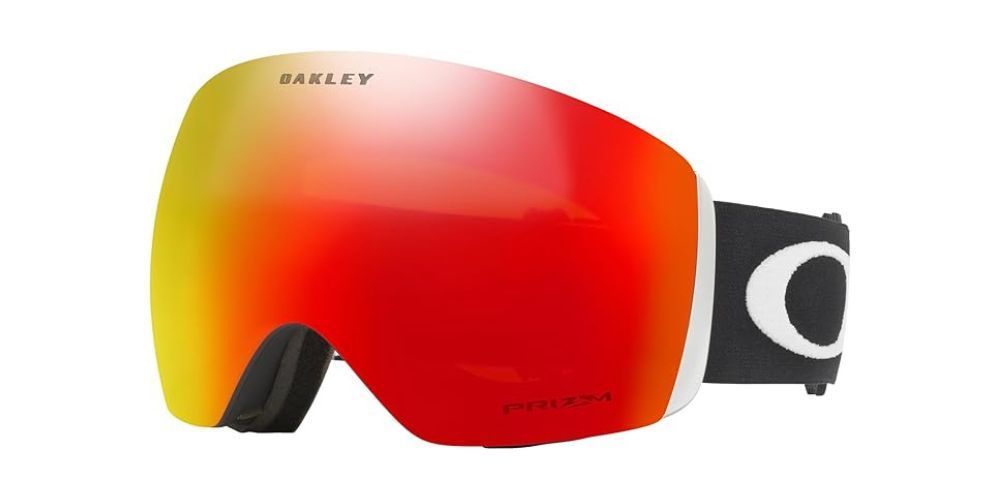
Style Trends and Safety Features
Modern ski goggles have transformed significantly, becoming crucial gear that not only protects but also expresses individual style. The aesthetics of these accessories are just as important as their functionality. This year, expect to find eye-catching colorways, bold designs, and collaborations with renowned artists that add a unique flair to the skiing experience. For example, brands like SPY+ often release goggles featuring vibrant, custom-designed straps that truly stand out on the snow-covered slopes.
In addition to the artistic collaborations, the materials used in ski goggles are increasingly eco-friendly, adding an extra layer of appeal. Companies are exploring sustainable practices and recycled materials, catering to the environmentally conscious skier who still wishes to sport an attractive design. This shift towards sustainability reflects wider fashion trends emphasizing responsibility without compromising on style.
When it comes to safety innovations, advanced features are now commonplace in quality ski goggles.
Extended peripheral lenses are becoming a game-changer, allowing skiers to have a broader field of vision which is vital when navigating crowded slopes or sharp turns. Enhanced UV protection remains a standard feature, with many models ensuring 100% UV400 protection that safeguards your eyes from harmful rays. Moreover, shock-absorbing frames provide additional safety by minimizing injury risk from impacts—be it from a fall or from flying debris on the slopes.
Other remarkable advancements include:
- Anti-fog coatings: Maintaining clear visibility during runs.
- Interchangeable lenses: Giving users versatility for varying light conditions.
- Memory foam padding: Ensuring comfort during extended wear.
As these styles and safety measures evolve, selecting the right pair becomes essential for maximizing both performance and enjoyment on the slopes. With this knowledge in hand, understanding how to care for and maintain your gear appropriately becomes the next important step toward a successful skiing season.
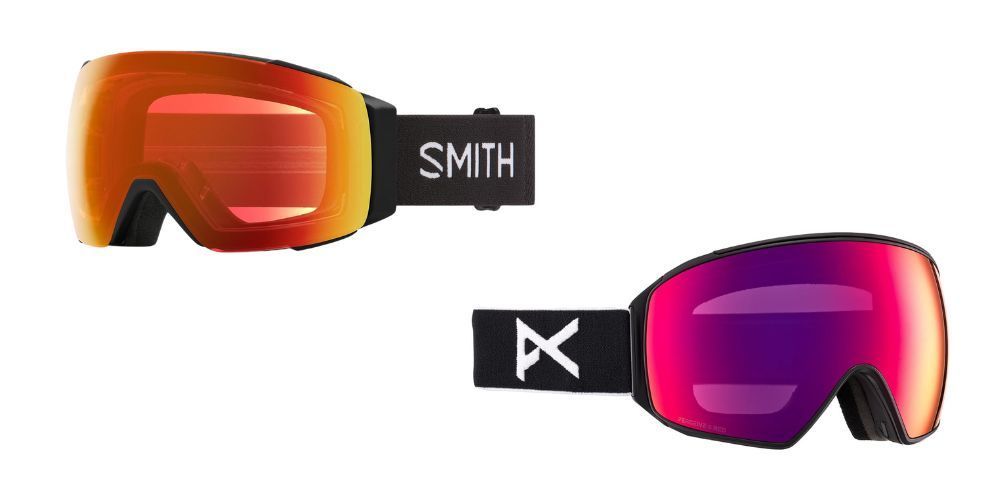
Maintenance and Care Tips
Even the best goggles need proper care to last through the seasons. The first step in maintaining your ski goggles is cleaning them correctly. Always use a microfiber cloth, as this soft material is specifically designed to avoid scratching the lenses. Regular lens cleaning should be performed after every use to keep them clear and free of debris. Avoiding harsh chemicals is essential; these can damage the protective coatings that many modern lenses come equipped with, leading to diminished visibility.
Following cleaning, consider how you store your goggles when not in use, as improper storage can lead to unnecessary wear and tear.
Storage
For storage, always place your goggles in a protective case or pouch. This simple step prevents scratches and keeps dust at bay when your gear is tucked away for the off-season. Storing them in a cool, dry area away from direct sunlight is equally important; extreme temperatures can warp frames and degrade lens quality over time. If you have multiple pairs, make sure to keep each set in its own designated spot to avoid clutter that might lead to accidental damage.
After establishing a routine for cleaning and storing your goggles, it’s time to address their anti-fog features.
Anti-Fog Maintenance
To maintain effective anti-fog capabilities, regularly check and clean the ventilation ports located on the frame of your goggles. These ports allow airflow that helps regulate temperature differences between the inside and outside of the lens, which is crucial in preventing fogging during use. Ensure they are free from obstructions like dust or snow residue by performing maintenance bi-weekly or before heading out for a day on the slopes.
By integrating these maintenance tips into your regular skiing routine, you'll find that your goggles remain in top condition throughout the season, allowing you to focus on what really matters—enjoying those thrilling runs down the mountain!
In short, taking care of your ski goggles not only prolongs their life but also enhances your skiing experience. Happy skiing!
AUTHOR
Nature's Playbook
As an Amazon Associate I earn from qualifying purchases.





